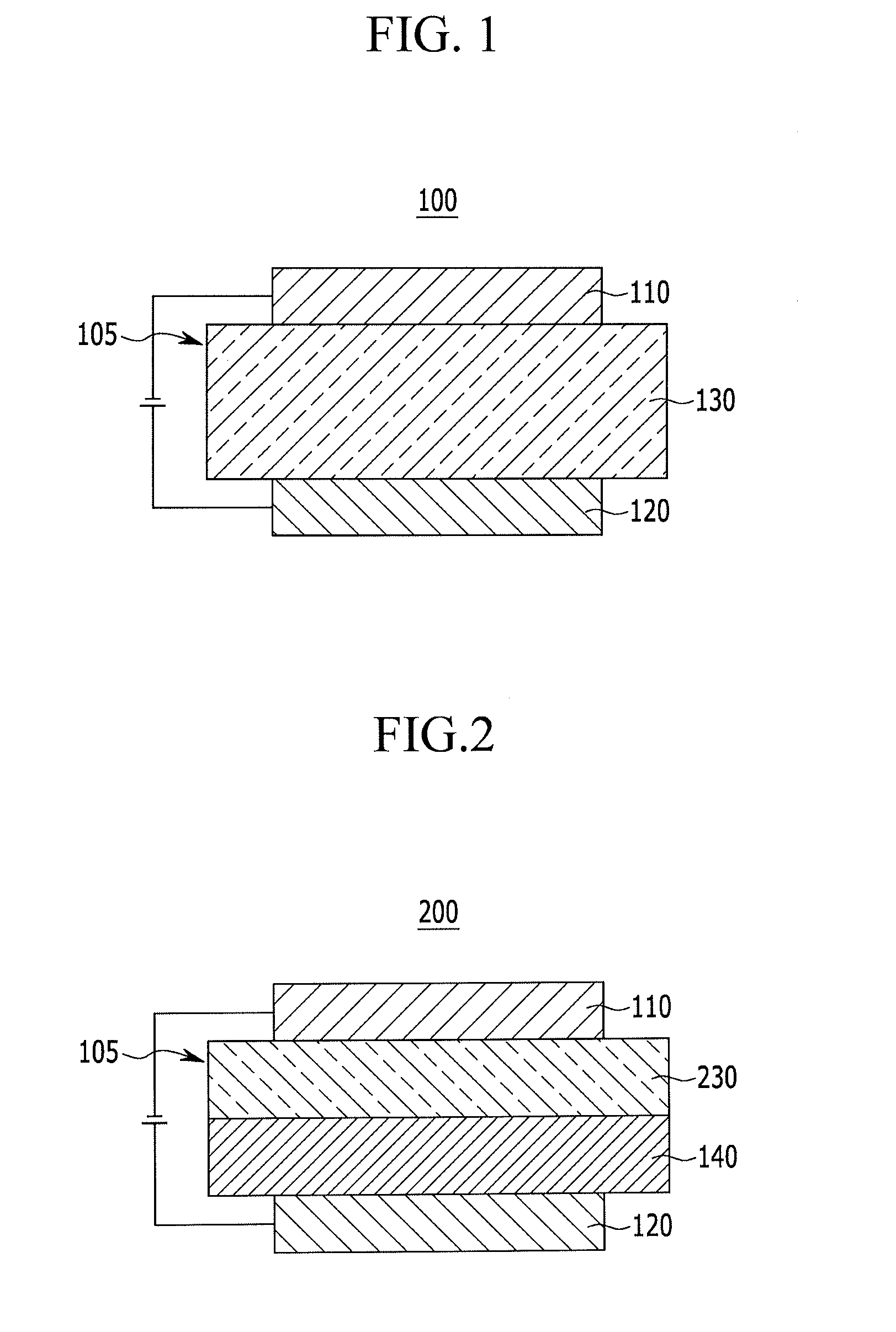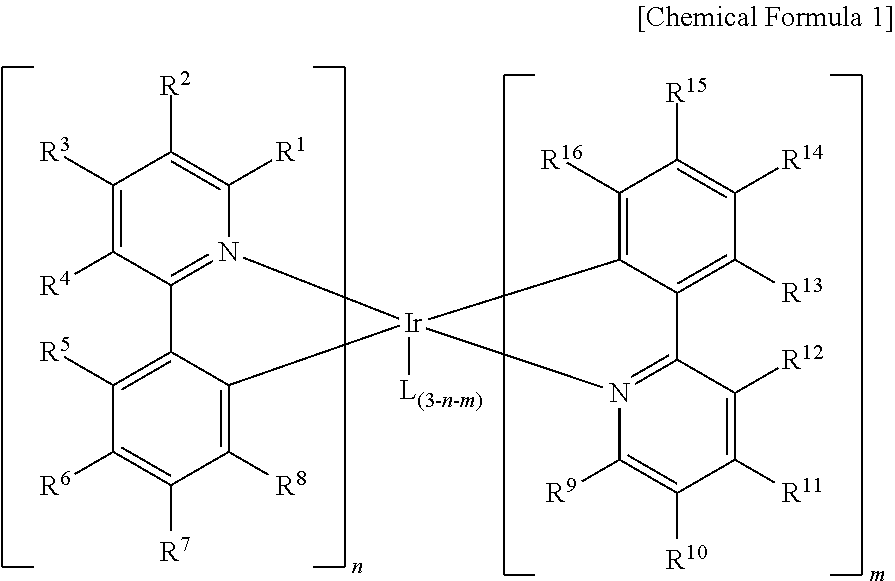Compound for organic optoelectric device, organic optoelectric device comprising same, and display apparatus comprising organic optoelectric device
- Summary
- Abstract
- Description
- Claims
- Application Information
AI Technical Summary
Benefits of technology
Problems solved by technology
Method used
Image
Examples
preparation example 1
Preparation of Compound M-1
[0084]
[0085]Preparation of Compound 1
[0086]87 g (377.97 mmol) of 5-trimethylsilyl-2-bromopyridine (Organic Electrinics 10 (2009) p. 1066-1073), 89.82 g (453.56 mmol) of 3-biphenylboronic acid, 630 mL of 1,4-dioxane, and 378 mL of a 2 M-potassium carbonate aqueous solution were mixed in a 2 L round-bottomed flask equipped with an agitator having a nitrogen atmosphere, 13.1 g (11.34 mmol) of tetrakistriphenyl phosphine palladium (0) was added thereto, and the mixture was heated and refluxed under a nitrogen stream for 12 hours. When the reaction was terminated, an organic layer was separated, and a solvent was all removed therefrom. Then, column chromatography was performed, obtaining 53.34 g of a compound 1 (a yield: 47%).
[0087]Preparation of Compound 2
[0088]22.36 g (74 mmol) of the compound 1, 8.8 g (29 mmol) of iridium chloride, 123 mL of 2-ethoxyethanol, and 41 mL of distilled water were put in a 500 mL round-bottomed flask and then, heated and refluxed ...
preparation example 2
Preparation of Compound P-2
[0094]
[0095]Preparation of Compound P-2
[0096]30.0 g (33.48 mmol) of the compound 3 according to Preparation Example 1 and 15.58 g (100.44 mmol) of 2-phenylpyridine were dissolved in 300 mL of glycerol in a 250 mL round-bottomed flask, and the solution was heated and refluxed at 220° C. for 12 hours. The reaction was terminated by pouring the reactant to water, and a solid produced therein was filtered. The solid was washed with water and methanol, dissolved in dichloromethane, separated through column chromatography, and recrystallized, obtaining 9.54 g of a compound P-2 (a yield: 30%).
[0097]calcd. C51H48IrN3Si2: C, 64.39; H, 5.09; Ir, 20.20; N, 4.42; Si, 5.90. found: C, 64.28; H, 5.04; N, 4.44.
preparation example 3
Preparation of Compound P-3
[0098]
[0099]Preparation of Compound P-3-1
[0100]79.32 g (511.10 mmol) of 2-phenylpyridine, 61.04 g (204.44 mmol) of iridium chloride, 852 mL of 2-ethoxyethanol, and 283 mL of distilled water were put in a 100 mL round-bottomed flask and then, heated and refluxed for 24 hours. When the reaction was terminated, the resultant was cooled down to room temperature, and a solid produced during the reaction was filtered and then, washed with water and methanol. The solid was dried in a vacuum oven, obtaining 80 g of a compound P-3-1 (a yield: 73%).
[0101]Preparation of Compound P-3-2
[0102]80 g (74.62 mmol) of the compound P-3-1, 16.42 g (164.04 mmol) of 2,4-pentanedione, and 79.06 g (746.20 mmol) of sodium carbonate were dissolved in 800 mL of 2-ethoxyethanol in a 2000 mL round-bottomed flask and then, heated and refluxed for 5 hours. When the reaction was terminated, the resultant was cooled down to room temperature, and a solid produced therein was filtered. Then,...
PUM
 Login to View More
Login to View More Abstract
Description
Claims
Application Information
 Login to View More
Login to View More - R&D
- Intellectual Property
- Life Sciences
- Materials
- Tech Scout
- Unparalleled Data Quality
- Higher Quality Content
- 60% Fewer Hallucinations
Browse by: Latest US Patents, China's latest patents, Technical Efficacy Thesaurus, Application Domain, Technology Topic, Popular Technical Reports.
© 2025 PatSnap. All rights reserved.Legal|Privacy policy|Modern Slavery Act Transparency Statement|Sitemap|About US| Contact US: help@patsnap.com



